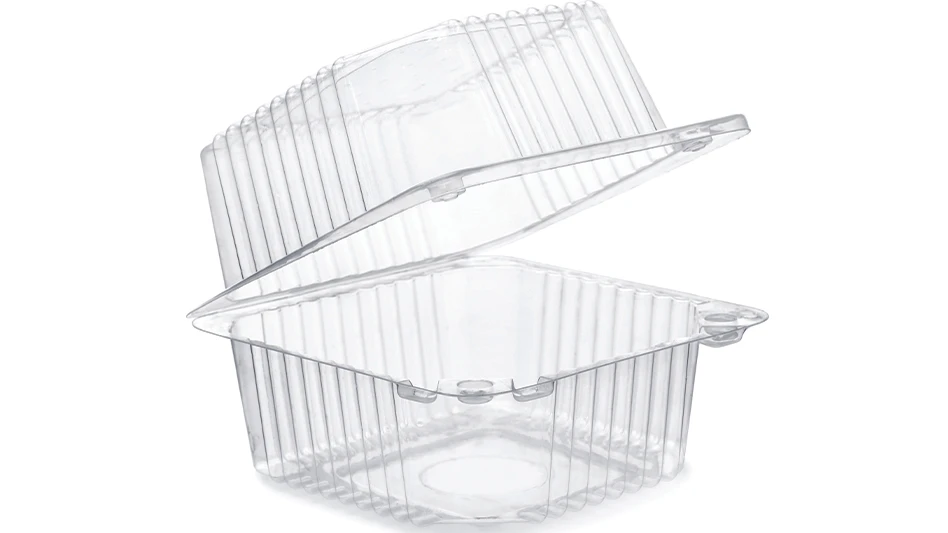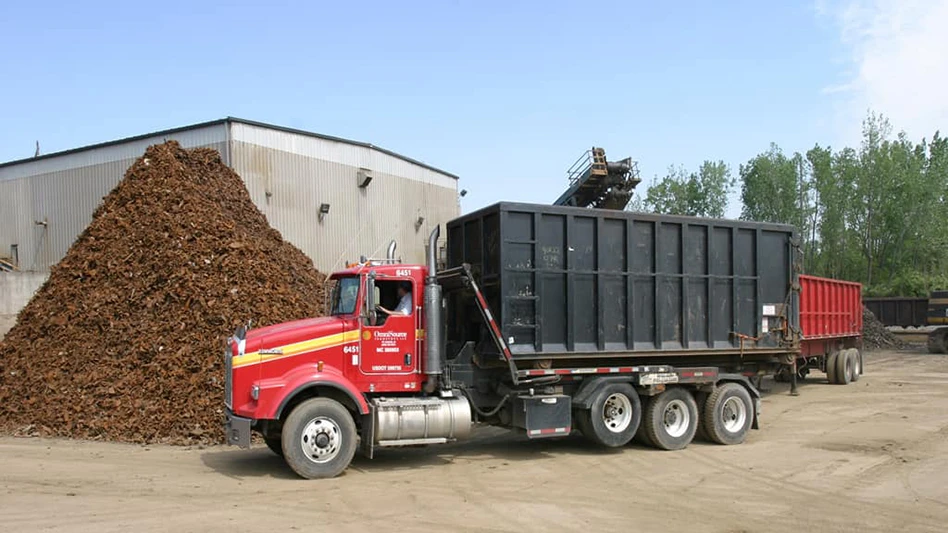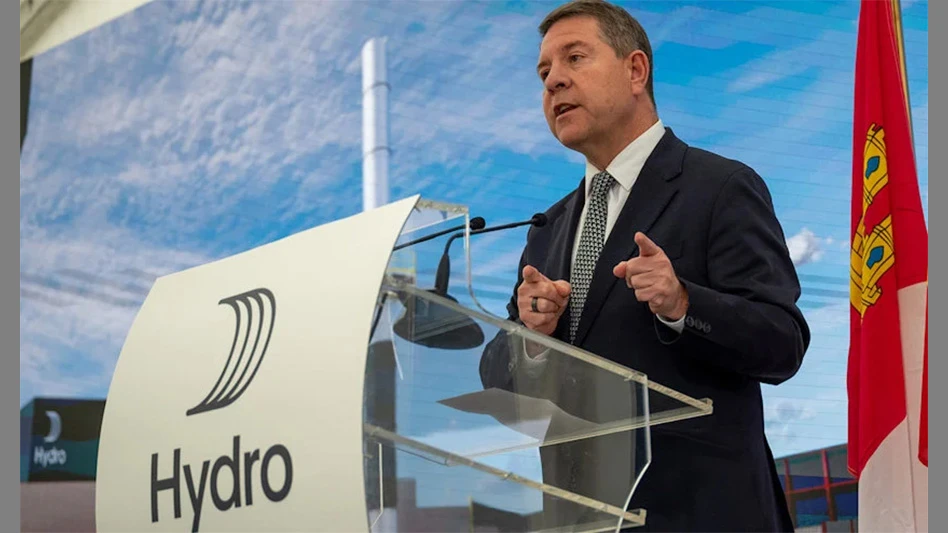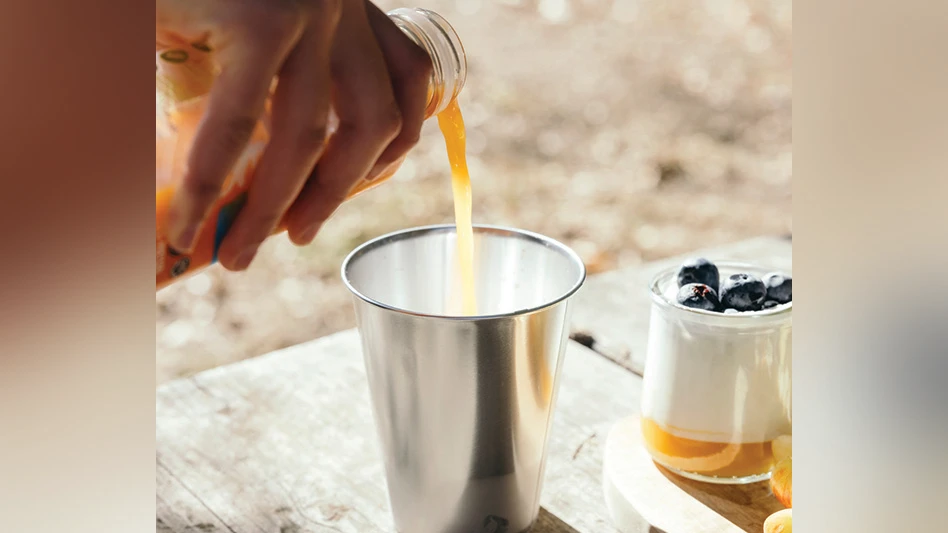
Legislation & Regulations
Minnesota passes EPR legislation
Minnesota Gov. Tim Walz signed an extended producer responsibility (EPR) bill into law May 21, making it the fifth state in the U.S. to pass EPR legislation.
The bill was part of omnibus legislation, HF 3911, the 2024 Environment and Natural Resources Budget and Policy bill, passed May 17 by the Minnesota House of Representatives as amended by the conference committee report, by a vote of 70-56.
The EPR bill, known as the Packaging Waste & Cost Reduction Act, sponsored by Rep. Sydney Jordan, makes packaging producers responsible for the waste they create and incentivizes recycled content.
“Packaging waste and printed paper now account for 40 percent of our garbage,” Jordan says. “The burden of managing this ever-growing deluge of packaging waste currently falls on local governments and taxpayers.”
The EPR program will create a producer responsibility organization (PRO) comprised of the largest producers of packaging sold in Minnesota. Members of the PRO will be required to pay fees based on the type and amount of packaging they sell in the state. Producers will be assessed fees that will be used to pay most recycling costs for residents, schools, most nonprofits and government entities and support increased access to recycling, composting and reuse services; fund public education; conduct a needs assessment every five years to evaluate the program’s impact on the waste stream; and cover the Minnesota Pollution Control Agency’s (MPCA) costs of implementing and enforcing the program.
The program also requires MPCA to create a curbside recyclability list and an alternative collection list. Based on the initial needs assessment and feedback from the public, the agency will determine the types of materials that can be recycled curbside and those that can be recycled through alternative methods of collection, such as store drop-off. If a material is not on either list and is not reusable or compostable, it cannot be sold into the state after 2032.
Producers also will be required to redesign their packaging to be reusable, recyclable or compostable by 2032, though the MPCA could approve specific materials for a deadline extension through 2040, and to meet specific MPCA-established targets for waste reduction, reuse, recycling and postconsumer recycled content that are based on findings in the needs assessments.
Minneapolis-based material recovery facility operator Eureka Recycling, the Consumer Brands Association and Ameripen (American Institute for Packaging and the Environment) and the American Beverage Association supported the legislation, while the American Forest & Paper Association (AF&PA) called for Walz to veto the bill.
Eureka worked with its partners in the MN Zero Waste Coalition to strengthen the language of the bill in ways that aim to eliminate the most problematic and unnecessary packaging, prioritize reduction and reuse and hold producers accountable for their packaging choices while ensuring the public has a voice in the implementation process.
Ameripen, based in Springfield, Massachusetts, says the bill is “unprecedented in its unique framework that aligns with Minnesota’s national leadership on strong recycling and composting infrastructure.”
Packaging producers will begin paying for recycling costs in Minnesota starting at 50 percent in 2029, 75 percent in 2030 and 90 percent in 2031 and beyond, while service providers must also register and meet performance standards for reimbursement based on competitive bids, and local governments will continue to be engaged partners.
The PRO will establish a process and reimbursement model for core recycling functions for residents and limited other entities only, with Ameripen noting the framework allows the PRO to focus on core activities without the burdens imposed by EPR laws in other states, such as artificial timelines for arbitrary recycling targets, mandates to fund recycling for commercial operations that can manage their own recycling costs or landfilling and mandates around packaging composition.
The organization says Minnesota’s packaging EPR legislation also demonstrates that each state is unique and should approach policy by considering existing infrastructure and laws.
Kevin Keane, president and CEO of the Washington-based American Beverage Association, calls Minnesota’s EPR legislation “well-designed,” adding that it helps establish “a strong standard for effective collection systems.”
AF&PA President and CEO Heidi Brock voiced the association’s disappointment with the decision to include EPR language in HF 3911, saying, “Our industry provides a recycling model to emulate rather than burden with untested systems that limit future investment. HF 3911 is not the appropriate vehicle for legislation that ultimately punishes responsible producers.”
Brock says she would prefer an opportunity for an EPR system to be considered as a standalone bill.
Transportation
Port of Baltimore channel fully reopened

The U.S. Coast Guard Captain of the Port of Baltimore officially has reopened the Fort McHenry Channel to commercial vessel traffic for 24-hour availability.
The channel has been fully or partially obstructed since March 26, when the multilane highway Francis Scott Key Bridge collapsed after a cargo vessel collided into it. Six members of a crew working on the bridge died in the collapse.
The port authority says the channel has been fully restored to its original depth of 50 feet, its 700-foot horizontal clearance and a vertical clearance of 214 feet because of the adjacent Baltimore Gas & Electric power lines.
Salvage operations to retrieve an estimated 50,000 tons of concrete and steel that fell into the channel, also considered part of the Patapsco River, are still underway as of press time.
In the meantime, the port authority says deep draft vessels still require a Maryland State Pilot and one escort tug, and the temporary alternate channels were to remain open and available for use until approximately June 30, when it was estimated all on-water salvage and survey operations would be concluded relating to the bridge response.
“We thank [Maryland] Gov. Wes Moore for his strong and unwavering leadership throughout this crisis,” a statement from the Port of Baltimore says. “We thank the Unified Command, especially the Coast Guard and Army Corps of Engineers, for their tireless and incredible work to reopen our full channel safely and much faster than was first expected. We thank our valued business partners for your loyal and continued support.”
In 2023, about 460,000 metric tons of steel for recycling valued at more than $220 million were exported from the Port of Baltimore, according to U.S. Census Bureau data.
That volume made the port the 10th most active ferrous scrap export district in the nation and the fifth busiest on the Atlantic coast, behind New York, Boston, Philadelphia and Providence, Rhode Island.
In terms of truck traffic serving the port and in the wider region, it likely faces several more years of alternate routes, including two interstate highway tunnels that pass beneath the Patapsco River. Trucks carrying cargoes banned from entering the tunnels face a wider detour on the Interstate 695 beltway.
Building a replacement bridge might cost an estimated $2 billion and is unlikely to be completed before 2028, according to an Associated Press report on the channel reopening.
Legislation & Regulations, Batteries
Illinois passes Portable Battery Stewardship Act
At the end of May, Illinois passed the Portable Battery Stewardship Act, establishing an extended producer responsibility program for portable and medium-format batteries.
The law goes into effect Jan. 1, 2026, and requires sellers or distributors of covered batteries or battery-containing products to bear costs of collecting, transporting and recycling batteries of all chemistries, managing them through a battery stewardship organization.
The National Waste & Recycling Association (NWRA), Arlington, Virginia, supported the bill’s passage, saying it marks a major step toward improving collection, recycling and environmentally responsible disposal of lithium-ion batteries and other types of portable batteries throughout the state of Illinois.
In addition to mandating that manufacturers and distributors participate in a stewardship program and pay for the collection and disposal of these batteries, the legislation mandates creating easily accessible collection points across the state, making it convenient for residents to responsibly dispose of used batteries, and educational initiatives will be launched about the importance of proper battery disposal and recycling. Stewardship organizations must submit annual reports detailing the overall effectiveness of the program, ensuring transparency and accountability, the NWRA says.
Several material recovery facility operators and waste haulers supported the legislation, including Homewood Disposal Service, GFL Environmental, LRS, Republic Services, Waste Connections and WM of Illinois.
Other supporters included Elgin Recycling, Illinois Environmental Council, Illinois Recycling Association & Foundation, Product Stewardship Institute and the Kendall County Health Department.
Plastics
US Plastics Pact releases packaging Roadmap 2.0
The U.S. Plastics Pact has released its latest strategic plan to help companies change how they design, use and reuse plastics in their packaging.
The Walpole, New Hampshire-based organization’s “Roadmap 2.0” focuses on practical steps to create a circular economy where plastic packaging is reused, recycled, composted and kept within the economy. The plan builds on successes and lessons learned from the initial “Roadmap to 2025,” setting forth updated targets to address plastic pollution and drive systemic change across the entire plastics value chain.
The U.S. Plastics Pact says the original Roadmap to 2025 was a “bold initiative to catalyze immediate action in the absence of a federal strategy,” and over the past four years the organization says it has seen significant process in plastics circularity.
Roadmap 2.0 is designed to carry forward the unfinished targets from the original plan and introduce new objectives based on the experiences of U.S. Plastics Pact Activators, including:
- Reuse innovations. By making reuse a core target, the group says single-use plastics can be greatly reduced.
- Design for circularity. The group says all plastic packaging will be designed and manufactured to be reusable, recyclable and compostable.
- Elimination of problematic plastics. By 2030, all items on the expanded Problematic & Unnecessary Materials List will be eliminated and virgin plastic will be reduced by 30 percent, ensuring only essential plastics are produced and used in ways that support sustainability.
- Effective recycling. The plan aims to recycle 50 percent of plastic packaging and establish the necessary infrastructure to achieve this at scale. In comparison, plastic packaging will achieve an average of 30 percent postconsumer recycled or responsibly sourced biobased content.
- Health and community impact. The plan also addresses the social impacts and disparities related to plastic production and use.
“Roadmap 2.0 is not just a continuation; it’s an evolution,” U.S. Plastics Pact Executive Director Emily Tipaldo says. “Our initial targets were intentionally ambitious to spark rapid change. With Roadmap 2.0, we’re taking what we have learned and succeeded to the next level, focusing on innovative solutions and addressing broader impacts. We are committed to working collaboratively with our activators and stakeholders to make these targets a reality.”
Roadmap 2.0 begins Jan. 1, 2026. By releasing it 18 months in advance, the organization says it is providing its Activators ample time to prepare for these new challenges and objectives.
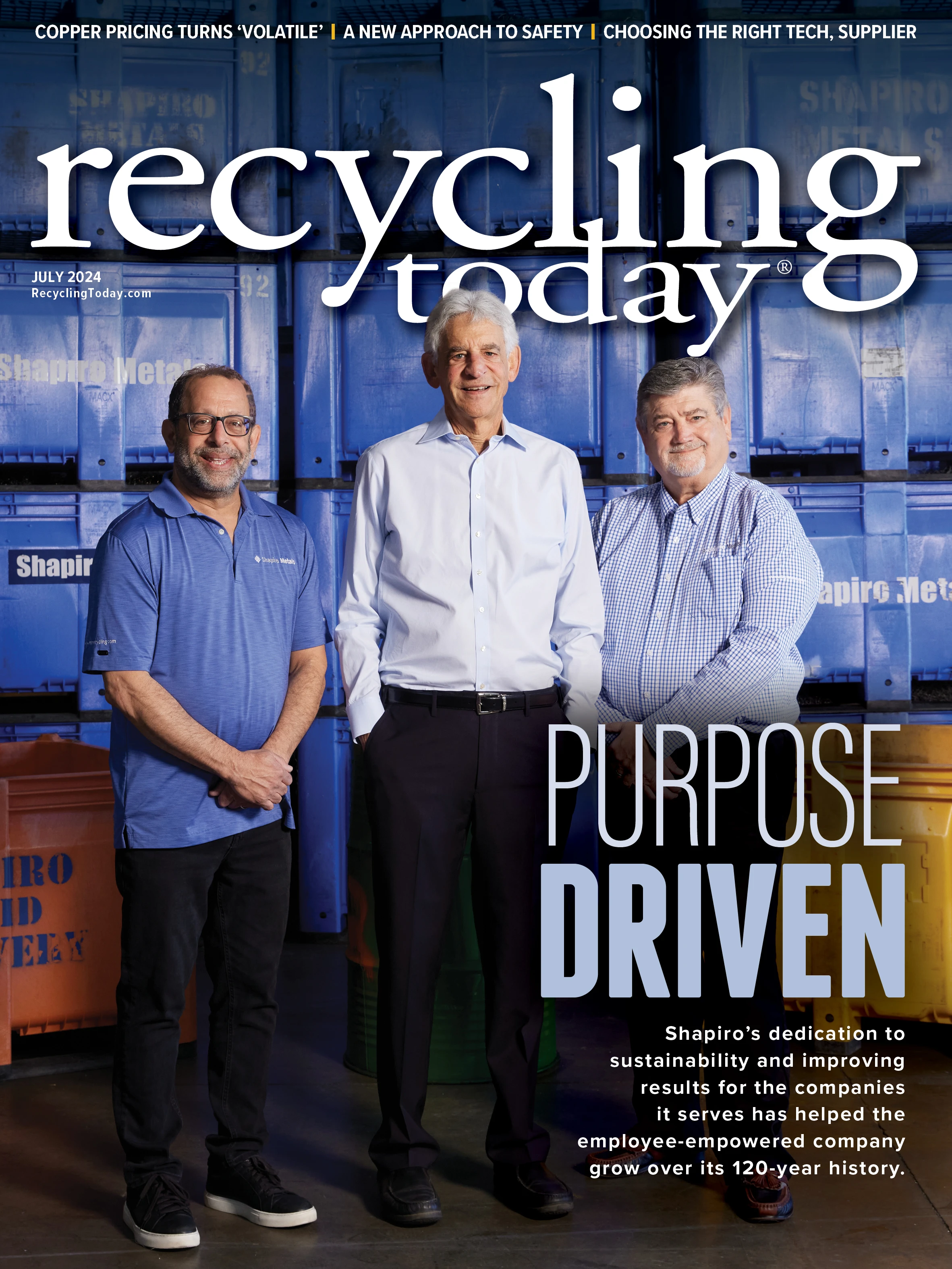
Explore the July 2024 Issue
Check out more from this issue and find your next story to read.
Latest from Recycling Today
- Toppoint Holdings expands chassis fleet
- Lego creates miniature tire recycling market
- Lux Research webinar examines chemical recycling timetables
- Plastics producer tracks pulse of wire recycling market
- Republic Services, Blue Polymers open Indianapolis recycling complex
- Altilium produces EV battery cells using recycled materials
- Brightmark enters subsidiaries of Indiana recycling facility into Chapter 11
- Freepoint Eco-Systems receives $50M loan for plastics recycling facility

